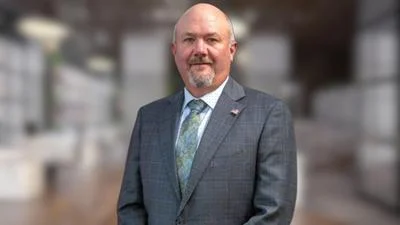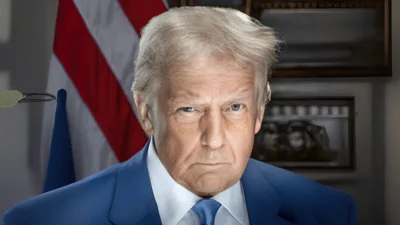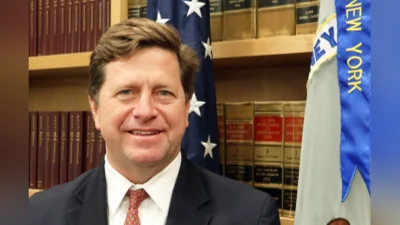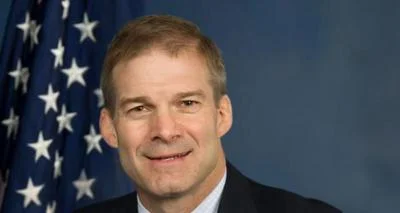The Congressional Record is a unique source of public documentation. It started in 1873, documenting nearly all the major and minor policies being discussed and debated.
“ON THE OCCASION OF THE 50TH ANNIVERSARY OF NIST'S BOULDER LABORATORIES” mentioning the U.S. Dept. of Commerce was published in the Extensions of Remarks section on pages E1539-E1540 on Sept. 8, 2004.
The publication is reproduced in full below:
ON THE OCCASION OF THE 50TH ANNIVERSARY OF NIST'S BOULDER LABORATORIES
______
HON. MARK UDALL
of colorado
in the house of representatives
Tuesday, September 7, 2004
Mr. UDALL of Colorado. Mr. Speaker, a week from today, the Boulder laboratories of the National Institute of Standards and Technology will celebrate their 50th anniversary. I rise today to honor NIST and its employees on this important occasion.
It wasn't long ago that we celebrated the centennial of NIST's founding, which Congress marked with the passage of a resolution that Representative Morella and I sponsored.
The National Institute of Standards and Technology was chartered by Congress on March 3, 1901 as the federal government's first physical science research laboratory. Scientists, engineers, and industrialists first advocated the establishment of a standards laboratory, pointing to the new challenges facing the U.S. as a rapidly industrializing world power.
Today, I'd like to draw attention to the work of NIST's laboratories in Boulder, Colorado, in my district.
In 1950, to address the lack of laboratory space, NIST established a cryogenic engineering laboratory and radio facilities on land donated by citizens of Boulder. NIST's Boulder facilities were expanded in the mid 1960s, when NIST and the University of Colorado (CU) joined forces to create the Joint Institute for Laboratory Astrophysics (JILA), a cooperative effort that has gained widespread recognition in atomic physics and other fields.
The partnership between NIST and CU has led to some amazing discoveries. Beginning in the 1970s, the discipline of cooling and trapping atoms was established in part by experiments with electrically charged atoms by researchers at NIST's Boulder campus. This work inspired Dr. William Phillips and his team to demonstrate both the trapping and the cooling of atoms well below the temperature limits generally believed possible. Dr. Phillips was awarded the Nobel Prize in Physics in 1997 for this work.
In 1995, using these same techniques of laser cooling and trapping of atoms, scientists at JILA--NIST's Eric Cornell and CU's Carl Wieman--
cooled rubidium atoms to less than 1 millionth of a degree above absolute zero. This was 300 times lower in temperature than ever achieved before and created a new state of matter predicted decades ago by Albert Einstein and Indian physicist Satyendra Nath Bose. The Bose-
Einstein condensate is widely hailed as one of the century's major achievements in physics, and has been honored with several internationally prestigious awards.
All of this research has enabled the design and construction of one of the world's most accurate clocks, NIST F-1, which is used by NIST
(in cooperation with the Naval Observatory) to maintain the nation's time standard. The NIST-F1 is so accurate that it will neither gain nor lose a second in 20 million years! It is approximately three times more accurate than NIST-7, the previous time piece for the nation. This precise time information is needed by such users as electric power companies, radio and television stations, telephone companies, air traffic control systems, the Global Positioning System, participants in space exploration, the Internet, and navigators of ships and planes--
all of whom need to compare their own timing equipment to a reliable, internationally recognized standard, which NIST provides.
I'd also like to mention an interesting tale of ``technology transfer'' that has resulted from the time and frequency research in NIST's Boulder laboratories.
In the early 1970s, NIST developed a time distribution system that placed a hidden time code on an unused part of the TV signal. While the system was not implemented, this technology provided the basis for closed captioning. In the following years, several networks, working with NIST, took up the project and developed convenient encoding equipment and improvements to the captioning format. Then in 1980, NIST, the American Broadcasting Company, and the Public Broadcasting System received Emmys from the Academy of Television Arts and Sciences for this development. Today the Emmy is proudly displayed at NIST's Boulder laboratories and is a wonderful example of federal research that led to significant commercial spin-offs.
These are just some of the contributions NIST's Boulder laboratories have made to the nation in the half-century of their existence. NIST is poised to contribute to even greater advances in the 21st century. I will continue to call attention to the Boulder labs' contributions and the necessity of upgrading the facilities so that the Boulder scientists can continue to produce top-flight research.
As the attached article from the Daily Camera notes, Washington scientists who were reassigned to the new Boulder labs in 1954 weren't happy about moving to what they thought was a ``scientific Siberia.'' It's remarkable what a difference fifty years can make. It turns out that NIST's arrival triggered a ``scientific renaissance'' that made Boulder the scientific hub it is today.
I am proud to represent the scientific hub of Boulder and all the talented and dedicated scientists and employees who work at NIST, which has rightly been called a ``crown jewel of the U.S. government.'' I would like to express my congratulations again to NIST's Boulder labs for reaching this important half-century mark.
NIST at 50
federal labs helped turn boulder into tech center
(By Todd Neff)
Half a century ago this Sept. 14, President Dwight D. Eisenhower stepped before a new $4 million structure south of Boulder and dedicated the U.S. Department of Commerce's Boulder Laboratories. It was a landmark day for the city, then with a population of 20,000, and not just because it was the first visit to Boulder by a sitting president. The 10,000 people who braved the beating sun that Monday could not have known the Boulder labs would, over the course of the next 50 years, bring billions of dollars and thousands of jobs to the area. Nor could those present have imagined the role the labs would play in turning Boulder into a technology center.
The lab's arrival in Boulder was a combination of good fortune and determined effort. Some of the good fortune was President Harry Truman's 1949 secret order to stop clustering major buildings in Washington, D.C., because of the threat of nuclear attack. Yet the National Bureau of Standards' Central Radio Propagation Laboratory needed room to grow. That laboratory, like other NBS labs, had a basic mission that hasn't changed: Establish the standards that form the basis of technological development. Without standards, radio stations would broadcast on one another's turf, manufacturers would have no means of assessing the quality of materials such as steel, and time synchronization critical to communications, navigation and information technology wouldn't be possible.
As a Daily Camera editorial on Sept. 10, 1954, put it ``Of all the agencies of the government, the NBS is perhaps the greatest money-saving organization we have. Its huge cost of maintenance is offset many times by what it saves the government, business and the people in money, time and safety.'' With the Washington, D.C., area out of the question, NBS sought a small-town location with little radio noise, a university and a nearby transportation hub. Boulder, Charlottesville, Va., and Palo Alto, Calif., were the main contenders. Some of the key effort came from the Boulder Chamber of Commerce, led by Francis W. Reich. The chamber led a 1950 cash drive that raised $90,000--about $700,000 in today's dollars--in two weeks. They used $63,000 to buy 217 acres of pasture to donate to the federal government. Most of the rest bought the land east of Boulder that's now home to Ball Aerospace & Technologies Corp. The local money tipped the scales. Crews broke ground at the Boulder Labs in July 1952, finishing work in the spring of 1954.
It turned out to be a good investment. A 2002 University of Colorado study projected that the labs would bring $2 billion in economic benefit to the state between 2001 and 2005--and
$340 million to the city of Boulder alone. About 450 scientists and support staff--some from Washington, other from local NBS field offices--had moved in by the time Eisenhower rode up the Boulder Turnpike from his summer White House at Denver's Lowry Air Force Base. Yet those scientists weren't the first at the site. The Atomic Energy Commission, in a rush to build hydrogen bombs after the Soviet Union's successful nuclear tests, wanted a remote location to produce liquid hydrogen for its Los Alamos labs. It tapped NBS's Washington, D.C.-based Heat and Power Division to build a plant to produce liquid hydrogen. The plant began churning out the super-cold liquid in 1952 that would go into the world's first hydrogen bomb. When a nuclear scientists decided atomic bombs didn't need mass volumes of liquid hydrogen, the operation became the NBS's Cryogenic Engineering Laboratory in Boulder.
By the Boulder NBS' 10-year anniversary in 1964, it employed 1,400 people in two major laboratories. One was the original Central Radio Propagation Laboratory, which tested radio-wave behavior and developed standards associated with all sorts of radio transmission and propagation, including weather radar. The second was the Cryogenics Engineering Laboratory.
The names have all changed, often in mind-bending ways. For example, NBS' Central Radio Propagation Laboratory moved to the U.S. Weather Bureau in 1965, then became the Environmental Science Services Administration and, in 1970, the National Oceanic and Atmospheric Administration, or NOAA, as it's known today. The same 1965 move created the Institute for Telecommunication Sciences, which did radio-spectrum work. Today, the Institute for Telecommunication Sciences labs make up the whole of the National Telecommunications and Information Administration's presence in Boulder. The Cyrogenics Engineering Laboratory and a host of additions remained with the NBS until 1988, when NBS became the National Institute of Standards and Technology, or NIST.
Then there were the two NIST joint laboratories with the University of Colorado at Boulder. The Joint Institute for Laboratory Astrophysics, or JILA was created in 1962. Its researchers work in everything from astrophysics to atomic physics. It was two JILA scientists, Eric Cornell of NIST and Carl Wieman of CU, who won the 2001 Nobel Prize in physics for their discovery of Bose-Einstein condensate, a new form of matter. The CU-NIST Cooperative Institute for Research in Environmental Sciences, or CIRES, was created in 1967 and focuses on atmospheric physics. NIST, NOAA and the smaller NTIA make up today's Boulder labs. Combined, they employ about 1,800 including full-time government researchers, visiting researchers and students. About 750 are associated with NIST, 1,000 with NOAA and 75 with NTIA. Research has evolved even faster than names.
Bob Kamper, 71 a physicist who started at the labs in 1963 and rose to serve as NIST's director in Boulder from 1982 until his retirement in 1994, described how work evolved in the Cryogenics Division, where he started.
First it was about liquid hydrogen for the U.S. nuclear-weapons program. But by the 1960s, superconductivity--in which certain materials have zero electrical resistance at extremely low temperatures--was a major research interest. Expertise in super-cold temperatures also led to work in metallurgy (metals become brittle when temperatures plummet), work that eventually became part of today's NIST Materials Reliability Division. Among its efforts, that division is investigating the causes of the World Trade Center collapse after the terrorist attacks of Sept. 11, 2001. Efforts to establish the behavior of fluids at ultra-low temperatures became part of the NIST Physical and Chemical Properties Division. Kamper said that division played an important role in figuring out characteristics for new refrigerants in the wake of chlorofluorocarbon bans, for example.
Superconductivity-bred expertise in magnetics led to more advanced superconductor work as well as broad research in computer-storage devices. NIST's $93 million 2004 budget includes $29 million from outside sources, such as other government agencies and technology companies. ``You very much worked on what people would pay for, which is why I would say there is very little dead wood,'' Kamper said. He said he doesn't think the research ethos has changed. ``We were pretty enthusiastic way back when, and talking to the youngsters now, I think they still are,'' Kamper said.
``They're very much absorbed in their work.''
John Richardson, 82, arrived in Boulder in 1952 to work in microwave physics. He moved into the new labs when they opened in 1954. Richardson said NBS's arrival in Boulder triggered a ``scientific renaissance,'' strengthening the University of Colorado, luring the National Center for Atmospheric Research to the city and fueling technology companies such as IBM and Ball Aerospace & Technologies Corp.
Many Washington scientists reassigned to Boulder in the early 1950s were ``very anxious about it, because they viewed Boulder as a scientific Siberia,'' Richardson said. Half the staff left rather than come to Boulder, said Alan Shapley, 85. Shapley came to Boulder on an NBS scouting mission in the late 1940s and worked at what became NOAA until his retirement in 1983. ``There were very few who had ever heard of Boulder,'' Shapley said. But that changed quickly. Richardson said he and other Boulder labs researchers taught as adjunct professors at CU. The NBS presence attracted major scientific conferences to Boulder, as well, he said.
``Visitors came, saw the climate, saw the quality of life, and I have no doubt that many were persuaded to locate here, either individually or in business,'' he said. He calls NIST a ``crown jewel of the U.S. government.'' ``All our measurements and all our scientific progress ultimately can be traced back to NIST,'' Richardson said. ``If there were no NIST, it would have to be invented.''
____________________








